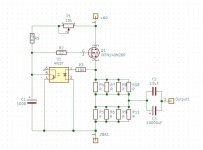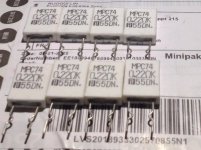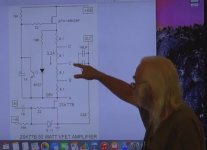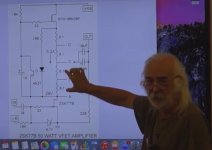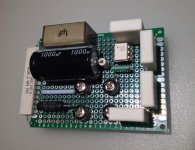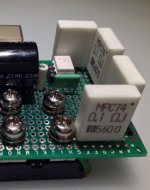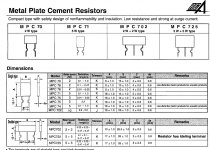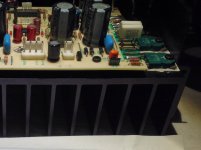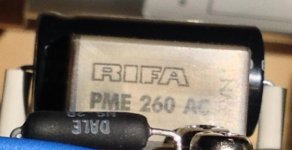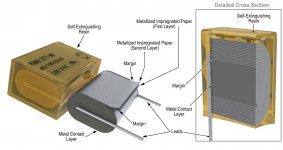I have now built #1196 and so far it kinda works, but at the same time not as well as I'd hoped.
I slightly reduced the reistance of one of the 910k resistors and added a 25K trimpot to let me trim the last offset.
And it does work, but it oscillates a bit. It is not as fast as the CCS so on startup there is still a 10V+ DC offset. I replaced the 1000uF cap for the lower FET with a 220uF one and it reduced it a bit. There is also a bit of DC offset oscillation after playing some 1khz sine waves. It wobbles around 1V and steadily gets smaller until after 15 seconds or so when it is down to below 10 mV again.
It might be the bias servo, but it might also be the active ground, post #8 in Virtual ground in power amp applications I'm using that is causing problems. It hasn't caused problems when I tried with the F6 though.
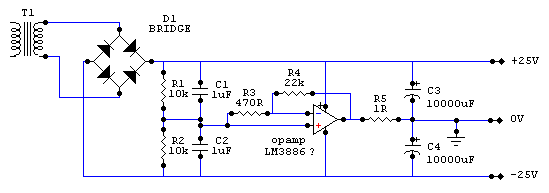
I'll do some experiments to see if I can stabilize it but if that doesn't work I'll probably try to build an Aleph J / J2 clone and keep it as a voltage feedback amplifier with a slight difference. I'd reduce the voltage feedback to ~ 10 dB or so and then wrap a current feedback loop around it with the rest of the feedback.
I slightly reduced the reistance of one of the 910k resistors and added a 25K trimpot to let me trim the last offset.
And it does work, but it oscillates a bit. It is not as fast as the CCS so on startup there is still a 10V+ DC offset. I replaced the 1000uF cap for the lower FET with a 220uF one and it reduced it a bit. There is also a bit of DC offset oscillation after playing some 1khz sine waves. It wobbles around 1V and steadily gets smaller until after 15 seconds or so when it is down to below 10 mV again.
It might be the bias servo, but it might also be the active ground, post #8 in Virtual ground in power amp applications I'm using that is causing problems. It hasn't caused problems when I tried with the F6 though.
I'll do some experiments to see if I can stabilize it but if that doesn't work I'll probably try to build an Aleph J / J2 clone and keep it as a voltage feedback amplifier with a slight difference. I'd reduce the voltage feedback to ~ 10 dB or so and then wrap a current feedback loop around it with the rest of the feedback.
question...I've read the Tokin 2SK182ES needs to have it's bias supply on prior to applying power to the rails. As I'm using IXFN here, does this have that same requirement? I'd like to eventually use just one power switch when I finish the chassis instead of powering up things separately as I'm doing now.
If your main supply has lots of capacitance and your bias supply has much less, the bias supply will come up ahead of the main supply so one power switch should work. So that should work for the Tokin.
Another thing, the IXFN is an enhancement mode MOSFET so it is off until the Vgs comes up.
Last edited:
@ Dan
Why use so many source resistors ?
8 pieces for single channel 😱
CCS can be made with only two big wattage power resistors..
so is 12 pieces less (and 24 soldering points) for two channels.
Have fun
Why use so many source resistors ?
8 pieces for single channel 😱
CCS can be made with only two big wattage power resistors..
so is 12 pieces less (and 24 soldering points) for two channels.
Have fun
@ Dan
Why use so many source resistors ?
8 pieces for single channel 😱
CCS can be made with only two big wattage power resistors..
so is 12 pieces less (and 24 soldering points) for two channels.
Have fun
You couldn't be more correct. Just having fun? Emulating the Singing Bush?
🙂
@ Dan
Why use so many source resistors ?
8 pieces for single channel 😱
CCS can be made with only two big wattage power resistors..
so is 12 pieces less (and 24 soldering points) for two channels.
Have fun
On second thought, the 8x may cost less than the one BIG and I was trying to make my PCBs more flexible in case any of my forum members want to try some.
When completed, I'll probably order six. So I'll have a couple pairs I'd be quite willing to share.
Regards,
Dan
Last edited:
Huge transformer(s) heatsinks, psu capacitors , semiconductors etc.all total cost hundred$,On second thought, the 8x may cost less than the one BIG..
so if at the amplifier signal input and with source resistors at the drain output of direct music signal path
how much I can save money on cheap resistors ?
Well not a lot..
Bigger power resistors from Mouser | Digi Key for example Vishay| Dale cost is affordable.
Why is better to use only 2 resistors instead of 8 pieces ?
Answer : resistors are not perfect transparent components every one have his Johnson thermal noise,
current noise, parasitic capacitance and inductance.
Get the same all CCS parameters but with less components and his soldering joints
can be only better for delicate sound quality logically 🙂
Edit : Futaba MPC74 are interesting metal plate 5Watt's model
Attachments
Last edited:
On second thought, the 8x may cost less than the one BIG and I was trying to make my PCBs more flexible in case any of my forum members want to try some.
When completed, I'll probably order six. So I'll have a couple pairs I'd be quite willing to share.
Regards,
Dan
For flexibility, provide for six resistor in series, and for speaker out at each location between resistors. That will then accommodate six 0R1 3W resistors, which some may be shorted to vary the total resistance value.
The 0R6 is useful for the Tokin output version. I have also used 0R5 for my THF version although I am now using 0R6.
The option for different speaker out locations is also good for experimenting. I have tried different output locations and I am sure Soundhappy has too.
Armed with a USB sound card and FFT software, you can tailor the harmonic distortion to your taste by varying Iq, Vds, and speaker output location.
Huge transformer(s) heatsinks, psu capacitors , semiconductors etc.all total cost hundred$,
so if at the amplifier signal input and with source resistors at the drain output of direct music signal path
how much I can save money on cheap resistors ?
Well not a lot..
Bigger power resistors from Mouser | Digi Key for example Vishay| Dale cost is affordable.
Why is better to use only 2 resistors instead of 8 pieces ?
Answer : resistors are not perfect transparent components every one have his Johnson thermal noise,
current noise, parasitic capacitance and inductance.
Get the same all CCS parameters but with less components and his soldering joints
can be only better for delicate sound quality logically 🙂
Edit : Futaba MPC74 are interesting metal plate 5Watt's model
SoundHappy,
Your logic is impeccable and the Fubata is almost impossible to find on this side of the pond!
Regards,
Dan
My build CCS are with 4 x 0.1R MPC74 but I do simplyfi this and use only one 0.2R insted of 2 x 0.1R..I was trying to make my PCBs more flexible..
so new version flexible CCS be 0.2R +0.1R+0.1R so total use of 3 resistors for one channel
but get possibilty to connection with C point ( more H2) or D ( dominant H3) sound.
Papa great CCS is the more audio modular version on the photos
Attachments
SoundHappy,
Your logic is impeccable and the Fubata is almost impossible to find on this side of the pond!
Regards,
Dan
Fukushima Futaba MPC74 5W 0,1 Ohm 5% Metal film resistor 0.1 Ω Radial lead MPC74 5 W 5 % 1 pc(s) | Conrad.com
I get 20 genuine pieces from seller in China received last 10 days but temporaly out of stock try next week maybe ?
10pcs FUTABA MPC74 Series 0.22R/5W non-inductive resistance | eBay
.The 0R6 is useful for the Tokin output version. I have also used 0R5 for my THF version although I am now using 0R6.
The option for different speaker out locations is also good for experimenting. I have tried different output locations and I am sure Soundhappy has too.
Yes CCS resistors connected in series and different speaker out location
( + sometimes reverse speakers polarity's ) bring to music sessions more possibility's
 😀
😀 Thanks to Mr.Pass for all good time!
Thanks to Mr.Pass for all good time!@Soundhappy, you sir are a component connoisseur! What kind of capacitor is that 1uf cap in post # 1236?
Jeffrey
Jeffrey
Only MPC78 (2 watt's) or MPC74 (5 watt's) are the best for audio.
Accuphase brand amplifiers use them
@ Jeffrey
Rifa PME 260 AC
Accuphase brand amplifiers use them

@ Jeffrey
Rifa PME 260 AC
Attachments
- Home
- Amplifiers
- Pass Labs
- 50w Single-Ended BAF2015 Schade Enabled
